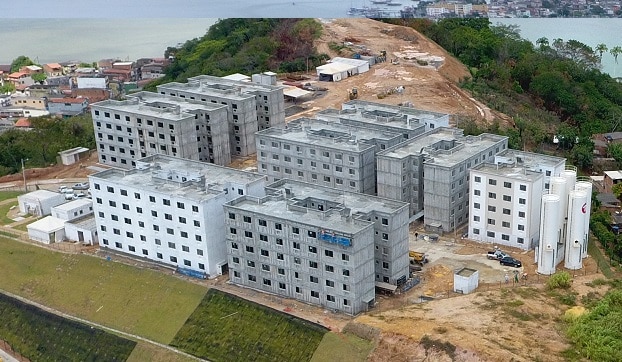
How Tenda, betting on high performance, expects to grow in the coming years
Tenda is one of the main construction companies in Brazil, providing affordable housing to an increasing number of families investing in first-time home ownership. All projects are launched within the ‘Casa Verde e Amarela’ Government Program, aimed at families with a gross monthly income of up to R$4,000.
The construction company recently invested in the purchase of a wood frame factory — wooden components that are joined together to assemble houses. The goal is to produce around 10,000 units per year by 2026. Tenda’s new vision came after a great amount of internal reflection.

It debated on whether to continue to be a great cash generator, stable, but with limited development, or to take advantage of external expertise to start a new business cycle and eventually chose the second option. We talked to Tenda´s CEO Rodrigo Osmo about the Transformation Journey that the company has been undergoing and its plans for the near future.
Tenda is currently one of the largest construction companies and property developers in Brazil, with a focus on the affordable housing segment. With the support of Staufen, the company has spent seven years investing in becoming more efficient and productive to ensure that it is able to meet its completion dates – optimizing resources, on time, and with quality. How do you assess Tenda’s transformation in recent years?
The company has an “industrial approach” as a strategic differential within its business model. With our continuous improvement and gains of scale, we were able to create a virtuous cycle, allowing us to reduce our costs by more than 30% during this period, and thus making us the player with the lowest execution costs in the market. Our next step will be to migrate production from an on-site to an off-site system, further leveraging our industrial approach.
Civil construction, despite being one of the largest economic sectors in the world, is also considered to be one of the most inefficient. There is a lot of waste and losses in the segment (with materials, equipment, labor, etc.). How does Tenda combat this waste?
We calculated that 60-70% of the labor component of each apartment constructed was wasted. The number seems huge, but those who are familiar with construction sites can see this waste everywhere: in high wait times between activities, in periods during which contractor employees have to stop to wait for a project to start, in materials not available for immediate use.
We decided to tackle this waste with an industrial approach, by accepting help from Staufen. We structure our production so that it has continuity and rhythm, that is, the same execution team produces the same number of apartments every day, non-stop, on different plots of land, like a production line. In doing so, we apply several Lean Manufacturing concepts to this long production line, eliminating waste and improving processes with each unit that is produced.
Largest construction company in Brazil with focus on affordable housing for families with a gross monthly wage of up to € 670.
1969
Founding year
4.551
Employees
2,28
B R$
turnover (2020)
Tenda has announced a major investment in research & development over the past two years. What are the biggest lessons learned in terms of productivity and efficiency gains, which are going to be essential for these current times?
The greatest motivator was addressing a limitation in our capacity to continue growing. Current construction methods require a high minimum local scale of 1,000 units/year in each city. There are only 13 cities that support this scale of operation, and we already operate in 9 of those. On the other hand, off-site construction, producing the houses in a factory environment and only assembling at the construction site, would allow us to substantially increase target markets and reach small and medium-sized cities across the country.
Tenda recently delivered the first construction projects using timber frame technology. What are the expectations going forward?
We expect to operate on a pilot scale at this learning stage through 2021 and 2022, then accelerate production in 2023. The challenge is significant: We aim to reach the production capacity of 10,000 units/year at the first factory in 2026. We want to grow on-site activity by 10% to 15% per year, launching close to 30,000 units in 2026. It is an ambitious plan. We launched 18,000 units in 2020.
There has been a lot of talk lately about committing to ESG. Is the investment in timber also linked to sustainability issues?
For a company like Tenda the ESG theme is in our soul. We have been collaborating in efforts to reduce the housing deficit in the country by building decent, quality homes for a public that cannot find alternatives in the market. Another aspect where ESG principles are being applied is in off-site design. We chose to go forward with timber frame technology, which uses reforested timber as its main component. This construction component has significant environmental impact, “sequestering” CO2 from the environment, unlike traditional construction methods.




